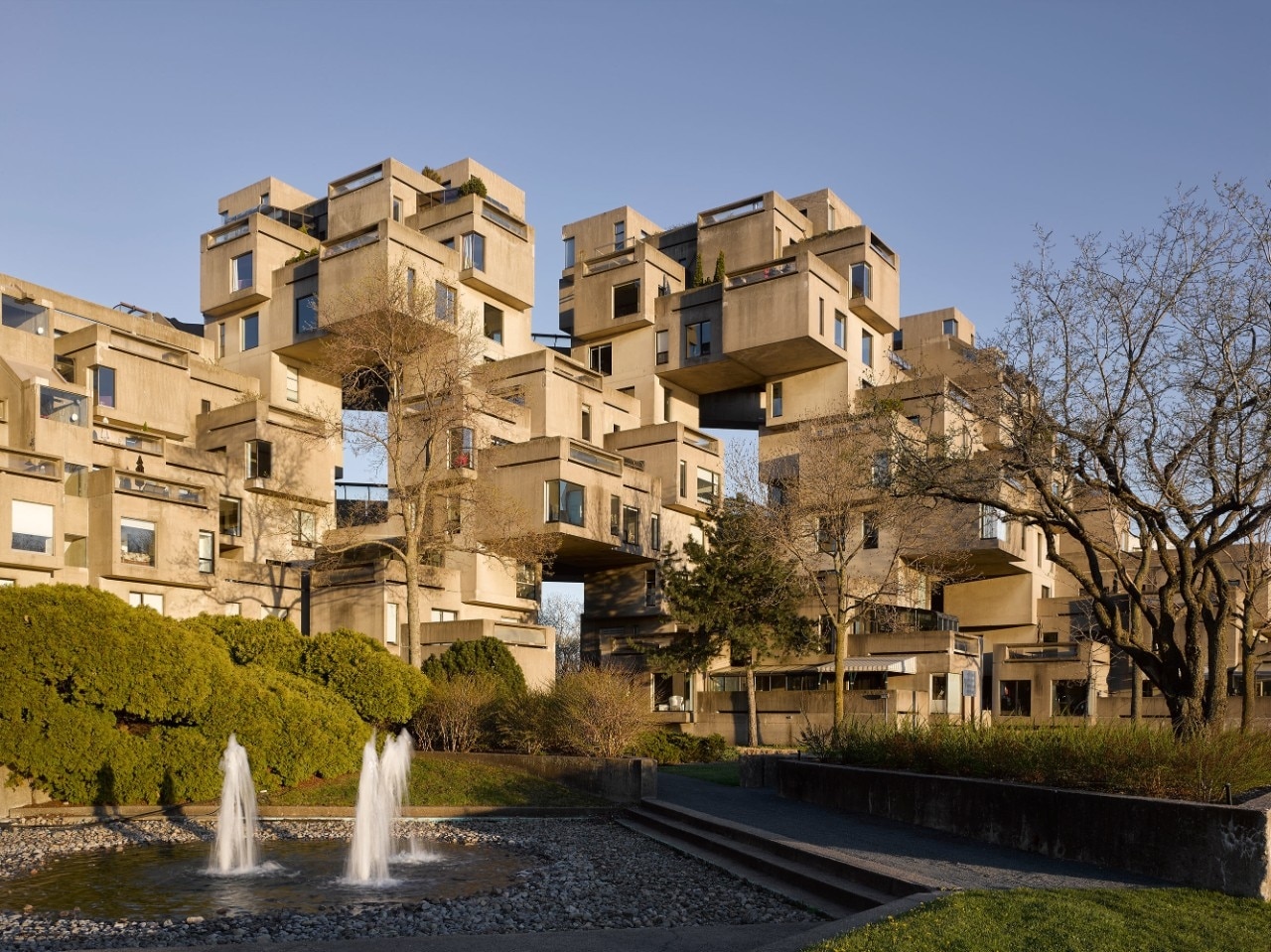This is Why Habitat 67 Is Montreal's Most Famed Brutalist Building

The design experiment that became a coveted address.
Okay, what is it?
One of the best-known examples of Brutalist architecture (from the French term béton brut, meaning raw concrete), this experimental housing development in Montreal is comprised of 158 apartments staggered over 12 storeys.

Who came up with it?
Israel-born Canadian architect Moshe Safdie was only 23 and had just finished working for celebrated architect Louis Kahn when he designed this renowned structure. He was obsessed with reinventing apartment living and wanted the stacked concrete boxes to feel more like a house. He achieved this by giving each cube access to a roof garden, which allowed residents to remain connected with nature.
What’s the backstory?
Safdie’s vision was actually built as an exhibition for Expo 67, held in Montreal that year – incredibly, the Canadian government coughed up the funds.
The apartments worked not only as an exhibit but served as accommodation for visiting dignitaries. Millions of visitors checked out the complex during the fair and when it ended, the apartments were sold off as permanent residences.
What’s it like today?
The building’s inventive form always had its critics but it’s now regarded as one of the most influential buildings of the 20th century. Despite less than positive reviews from some former residents, who found it stark (and claimed it leaked), most of its current denizens laud Habitat 67’s sense of community and considered design. Today, the apartments turn up for sale through Sotheby’s prestigious real estate firm.

What else has Safdie designed?
Cities all over the world expressed interest in similar complexes but none came to fruition. Habitat 67 remains Safdie’s most famous work, though his more recent designs are instantly recognisable: Singapore’s futuristic Marina Bay Sands and Jewel Changi Airport.



